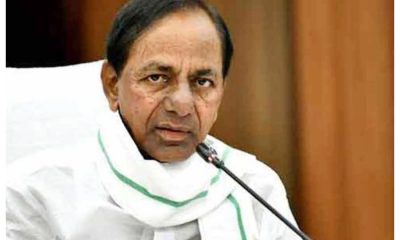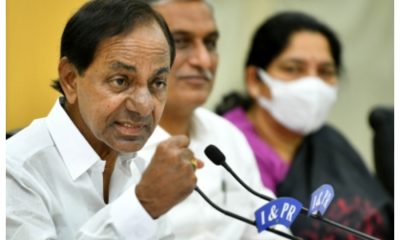National News
KCR likely to float national party Bharat Rashtra Samithi
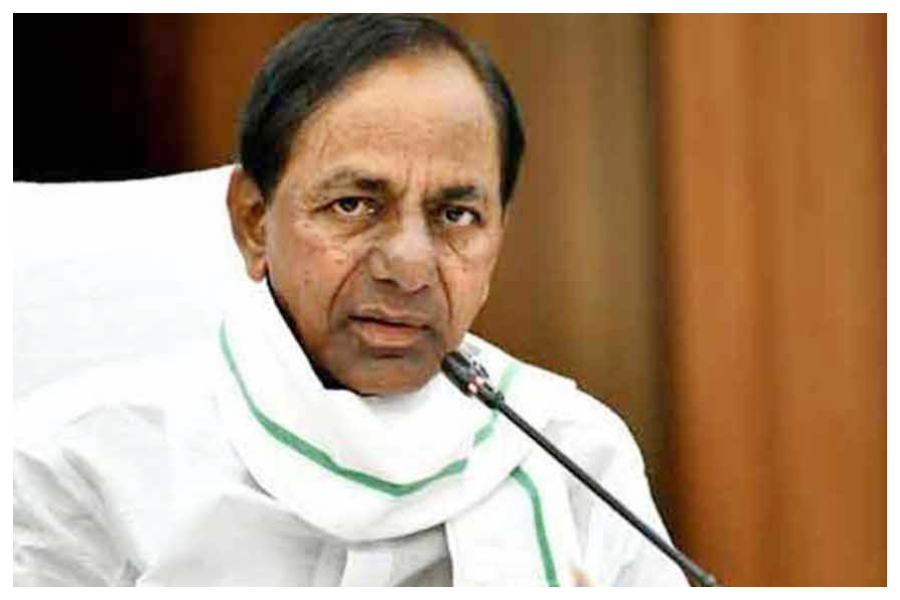
After failing to make any progress on his idea of a national front, Telangana Chief Minister K. Chandrasekhar Rao appears to have made up his mind to float a national party.
A final decision in this regard is expected to be taken on June 19 at the extended meeting of Telangana Rashtra Samithi (TRS) executive.
The TRS chief, who had a marathon discussion with state ministers and senior party leaders on Friday, is understood to have agreed to the proposal of floating Bharat Rashtra Samithi (BRS).
The process to register the new party with the Election Commission of India is likely to start soon. KCR, as the TRS supremo is popularly known, is looking to make a formal announcement of a new party in New Delhi by June-end.
TRS leadership is reportedly keen to have the TRS symbol of ‘car’ for the BRS as well. The TRS office coming up in the national capital will serve as the headquarters of the proposed national party, party sources said.
KCR, who has already announced his intention to play a key role in national politics, discussed the current political situation with his close aides for more than six hours. He is said to have accepted the proposal by a party MLA to name the proposed party as BRS.
After his meetings with Delhi Chief Minister Arvid Kejriwal, Samajwadi Party chief Akhilesh Yadav and former Prime Minister and Janata Dal(S) leader Deve Gowda last month, KCR had said that there would be a sensation soon in the country.
Political observers say KCR apparently decided to float a national party after failing to make progress in bringing anti-BJP and anti-Congress forces on a common platform to provide a national alternative.
Though he held a series of meetings with leaders of various political parties including Shiv Sena, DMK, RJD, SP and JD (S) during last few months, no consensus could be reached on forging a front as an alternative to both the BJP and Congress.
It is also significant to note that the much-awaited meeting between KCR and West Bengal Chief Minister and Trinamool Congress Chief Mamata Banerjee did not take place and despite the attempts made in the past KCR could not have Odisha Chief Minister Naveen Patnaik and Andhra Pradesh Chief Minister Y. S. Jagan Mohan Reddy on board as both the BJD and YSRCP continue to extend support to Narendra Modi government on key Bills.
Another indication that KCR has given up his plans to forge a front came during TRS plenary in April.
At the day-long plenary of TRS held to mark 21st foundation day of the party, he had hinted at floating a national party.
As he did not speak at the plenary about his meetings with leaders of various political parties and chief ministers of some states, this gave credence to the buzz that the TRS chief was toying with the idea of forming a national party.
KCR told the plenary that some legislators suggested that TRS should be changed into BRS. The leaders who spoke at the plenary appealed to KCR to play an active role in the national politics saying the country needs a visionary leader like him.
In one of the resolutions passed at the plenary, TRS said that it will play a key role in national politics in the coming days. The party observed it needs to play a constructive role and fill the political void at national level.
Responding to the requests made by the party leaders, KCR said he was ready to play an active role to the best of his ability. The plenary saw delegates repeatedly raising slogans of ‘Desh ka neta KCR’.
The TRS chief repeatedly remarked that the country should come out of the routine political system of fronts. “Four parties or four leaders coming together to remove somebody from the post of the Prime Minister and install another person in his place is not the solution,” he had said.
He pointed out that the country has seen many fronts in the past that did not yield desired results. He also narrated an incident in which some Communist leaders came to him and expressed the desire to bring together various parties and he told them that if this was aimed at only removing somebody from power he would not be part of it.
“We have seen many fronts. We need a front which works for the people. We need an alternative agenda, a new integrated agricultural policy, a new economic policy and new industrial policy,” he said.
Through the proposed national party, KCR is likely to present before the nation the successful model of Telangana. Highlighting the tremendous progress made by the state in a short span of eight year, the TRS leader is likely to push for a nation-wide debate on why the country with its immense natural and human resources can’t replicate the success of Telangana.
“We can dream and we can also make those dreams come true. Telangana has shown this,” said KCR, who believes that the people’s aspirations remained unfulfilled even after 75 years of independence.
KCR had earlier called for developing ‘Bangaru Bharat’ (golden Bharat), saying the country has the potential to become more prosperous than the US.
Business
IndiGo disruptions may cause revenue loss, penalties to company: Report
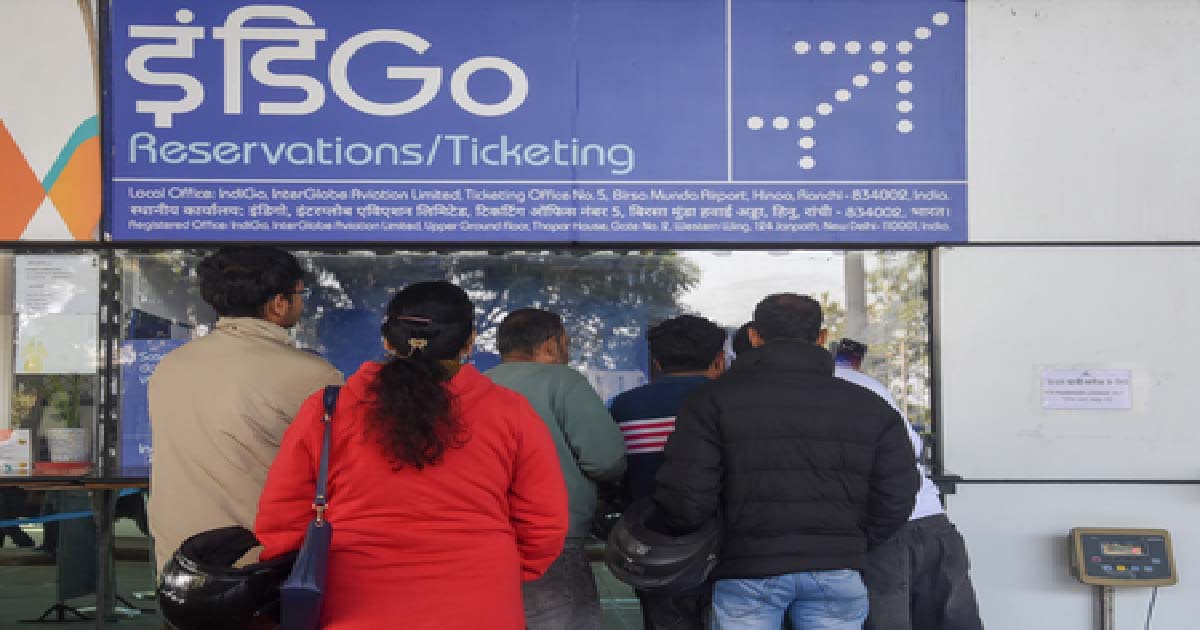
New Delhi, Dec 8: Widespread flight disruptions at IndiGo are credit negative, and refunds and compensation could cause it “significant financial damage”, credit rating agency Moody’s warned on Monday.
In a note, Moody’s said that regulatory penalties from the Directorate General of Civil Aviation (DGCA) remain possible as the airline failed to plan for aviation rules communicated over a year earlier.
The crisis struck as the airlines entered their peak winter schedule, with “significant lapses in planning, oversight and resource management” as the Phase 2 of the Flight Duty Time Limitation (FDTL) rules were introduced on November 1, 2025, after being communicated more than a year earlier, it noted.
The rules reclassified midnight–6 a.m. duties as night duty and cut permissible landings in 24 hours from six to two or three. The agency said that IndiGo’s lean operating model lacked resilience to integrate the change, forcing a system‑wide schedule reset.
Over 1,600 flights were cancelled on December 5, and over 1,200 were grounded in November, with cancellations beginning on December 2. Moody’s said IndiGo is yet to fully restore normal operations.
IndiGo said it was set to operate over 1,800 flights on Monday, up from 1,650 on Sunday, adding that more than 4,500 bags have been delivered to respective customers, and “we are on track to deliver the rest in the next 36 hours”.
The airline said it expects a return to full schedules by mid-December, adding that it is working “round the clock” to normalise operations.
It has so far refunded Rs 827 crore to affected passengers, and the rest is under process for cancellations up to December 15.
Union Civil Aviation Minister K. Rammohan Naidu said in the Parliament on Monday that the government has initiated a thorough inquiry into the matter.
“IndiGo was supposed to manage the crew and roster…We will take strict action. We will set an example for every airline. If there is any non-compliance, we will take action,” he said on the floor of the Rajya Sabha.
Crime
Palghar Crime: 40-Year-Old Constable Arrested For Allegedly Raping Woman Inside Kasa Police Station

Palghar, Maharashtra, Dec 08: A 40-year-old police constable has been arrested for allegedly raping a woman inside the Kasa police station in Maharashtra’s Palghar district, officials said on Monday.
According to a senior official from the Palghar rural police, the incident took place last week when the woman had visited the station to record her statement in connection with an ongoing case. The constable allegedly assaulted her within the premises.
Following a complaint filed by the woman, a case of rape was registered and the constable was arrested on Sunday, officials confirmed.
In the aftermath of the incident, the in-charge of the Kasa police station has been transferred. Further investigation is underway.
National News
PM Modi recalls how Vande Mataram defied British oppression, stood ‘like a rock’
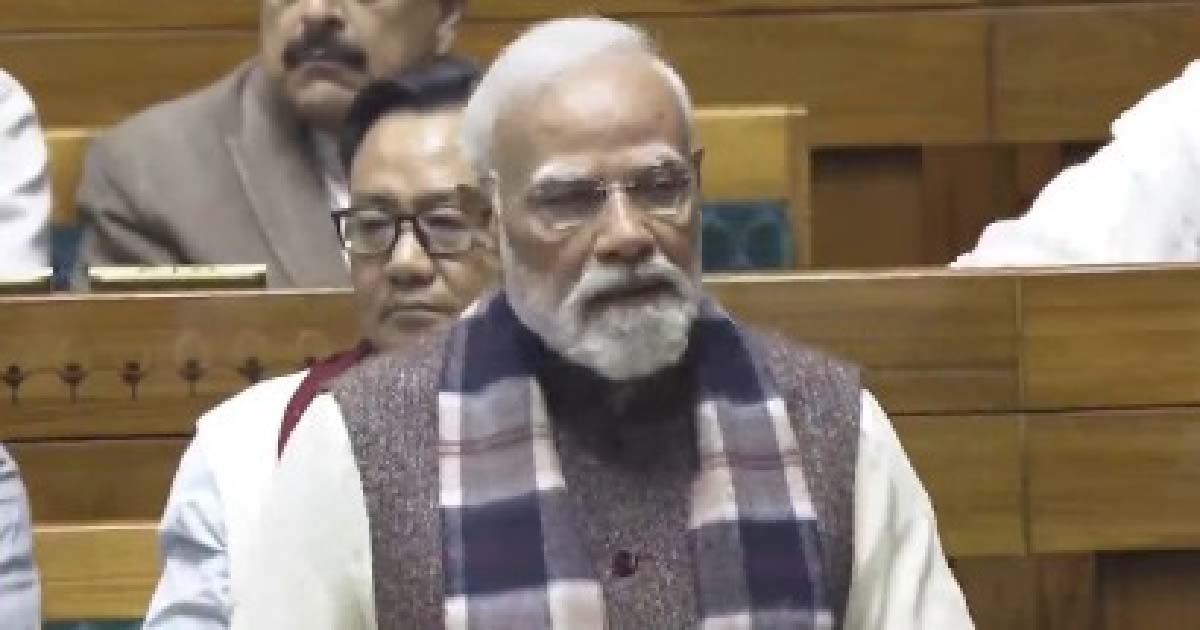
New Delhi, Dec 8: Prime Minister Narendra Modi, on Monday, invoked the enduring spirit of ‘Vande Mataram’ while initiating a day-long discussion in the Lok Sabha to mark the 150 years of the national song.
He described it as a hymn that stood “like a rock” against British oppression and continued to inspire unity across generations.
Tracing the song’s journey from its composition by Bankim Chandra Chattopadhyay in 1875 to its role in the freedom struggle, PM Modi said ‘Vande Mataram’ became a current of emotion that bound the nation together.
“Even when crises like the coronavirus pandemic struck, the spirit of ‘Vande Mataram’ continued to connect the country. Today, as we march towards an ‘Atmanirbhar Bharat’ (Developed India), this hymn remains a source of strength,” he noted.
The Prime Minister quoted Mahatma Gandhi, who had described ‘Vande Mataram’ as a song that united the nation.
“Pujya Bapu (Mahatma Gandhi) said ‘Vande Mataram’ connects us. It is the dream of today’s generation to build a prosperous India, and this song continues to inspire that vision,” PM Modi said.
He emphasised that the hymn was more than just words — it was a mantra of sacrifice, resilience, and unity.
From the days of colonial bans, when people were punished for speaking or printing the words, to the sacrifices of countless freedom fighters who embraced martyrdom with ‘Vande Mataram’ on their lips, the song has remained a symbol of defiance and hope.
PM Modi urged the Parliament to ensure that the legacy of ‘Vande Mataram’ is preserved and passed on to future generations.
“This is not just a tribute to history but a reaffirmation of our democratic spirit. The lessons of the past must continue to guide our future,” he said, adding that the 150th anniversary was an opportunity to restore pride in a hymn that has been the heartbeat of Bharat.
Initiating a day-long discussion on 150 years of ‘Vande Mataram’ in the Lok Sabha, PM Modi noted that ‘Vande Mataram’ stood like a rock and inspired unity despite British oppression.
“When ‘Vande Mataram’ completed 100 years, the nation was chained by the Emergency. At that time, the Constitution was throttled and those who lived and died for patriotism were pushed behind bars,” he said.
“The Emergency was a dark chapter in our history. Now we have the opportunity to restore the greatness of ‘Vande Mataram’. And I believe this opportunity should not be allowed to pass,” PM Modi added.
-

 Crime3 years ago
Crime3 years agoClass 10 student jumps to death in Jaipur
-

 Maharashtra1 year ago
Maharashtra1 year agoMumbai Local Train Update: Central Railway’s New Timetable Comes Into Effect; Check Full List Of Revised Timings & Stations
-

 Maharashtra1 year ago
Maharashtra1 year agoMumbai To Go Toll-Free Tonight! Maharashtra Govt Announces Complete Toll Waiver For Light Motor Vehicles At All 5 Entry Points Of City
-

 Maharashtra1 year ago
Maharashtra1 year agoFalse photo of Imtiaz Jaleel’s rally, exposing the fooling conspiracy
-

 National News1 year ago
National News1 year agoMinistry of Railways rolls out Special Drive 4.0 with focus on digitisation, cleanliness, inclusiveness and grievance redressal
-

 Maharashtra1 year ago
Maharashtra1 year agoMaharashtra Elections 2024: Mumbai Metro & BEST Services Extended Till Midnight On Voting Day
-

 National News1 year ago
National News1 year agoJ&K: 4 Jawans Killed, 28 Injured After Bus Carrying BSF Personnel For Poll Duty Falls Into Gorge In Budgam; Terrifying Visuals Surface
-

 Crime1 year ago
Crime1 year agoBaba Siddique Murder: Mumbai Police Unable To Get Lawrence Bishnoi Custody Due To Home Ministry Order, Says Report



